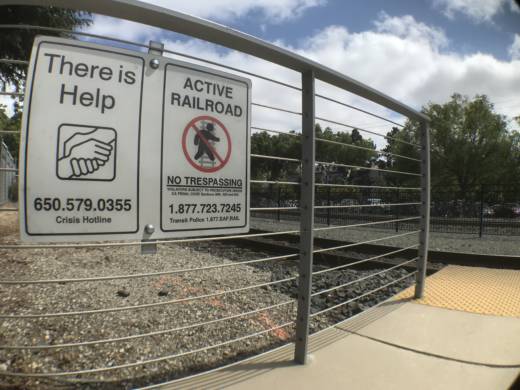Caroline Camhy didn’t have a plan the night she decided to grab a lawn chair and sit along the Caltrain tracks near her home. It was Oct. 20, 2009, and all she knew was that teenagers were killing themselves, and she had to do something.
"At that point I had a son coming into third grade and a son coming into fifth grade, and I started to think of what was going to happen," says Camhy, at her home office in Palo Alto. "What was I doing? Why was I here? What was I doing here? And how could I continue to live here when, just down the street, students of our local high school and middle school were taking their lives?"
It didn’t take long for other moms and dads to join Camhy. They'd sit in the dead of night, watching the trains barrel down the tracks. "It's very loud. And it's very bright and it comes very fast and it takes a long time being out there to get used to the speed at which it comes," says Camhy.
It was hard to see beyond a few feet. The light was almost blinding.
But maybe, Camhy thought, their presence would be a deterrent. Maybe what’s really needed, she thought, is for someone to sit in a chair outside, when it's cold, and "just be there."
At the height of the TrackWatch program, 150 volunteers in rotating shifts kept watch over the tracks. Camhy did it for three years, even after the city added paid security guards. And the number of suicides at Palo Alto’s four train stops went down.

By 2012, volunteers began to peter out, and as Camhy’s children got older, they needed her around more. It also occurred to Camhy that simply having someone sitting along the tracks was an unsustainable solution to a much deeper problem.
